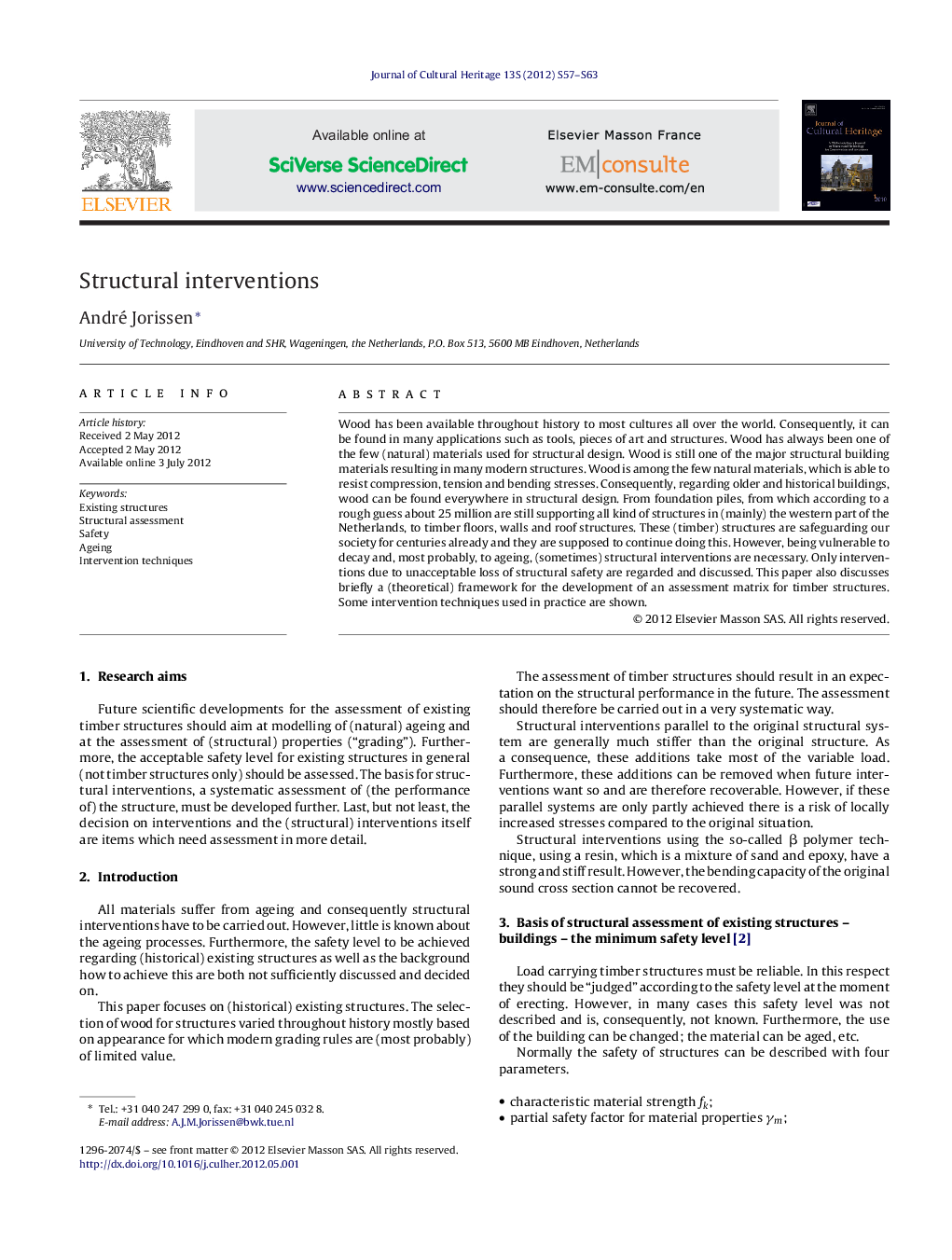| Article ID | Journal | Published Year | Pages | File Type |
|---|---|---|---|---|
| 1038237 | Journal of Cultural Heritage | 2012 | 7 Pages |
Wood has been available throughout history to most cultures all over the world. Consequently, it can be found in many applications such as tools, pieces of art and structures. Wood has always been one of the few (natural) materials used for structural design. Wood is still one of the major structural building materials resulting in many modern structures. Wood is among the few natural materials, which is able to resist compression, tension and bending stresses. Consequently, regarding older and historical buildings, wood can be found everywhere in structural design. From foundation piles, from which according to a rough guess about 25 million are still supporting all kind of structures in (mainly) the western part of the Netherlands, to timber floors, walls and roof structures. These (timber) structures are safeguarding our society for centuries already and they are supposed to continue doing this. However, being vulnerable to decay and, most probably, to ageing, (sometimes) structural interventions are necessary. Only interventions due to unacceptable loss of structural safety are regarded and discussed. This paper also discusses briefly a (theoretical) framework for the development of an assessment matrix for timber structures. Some intervention techniques used in practice are shown.
